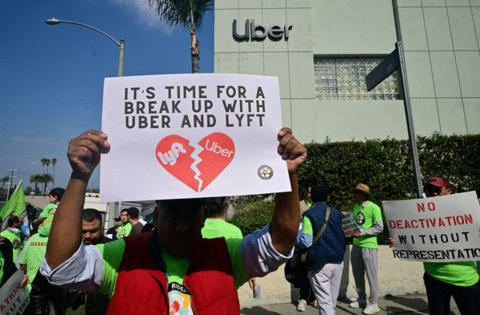POINT: Gig work doesn't have to be a race to the bottom -- but it's up to Congress
Published in Op Eds
The gig economy is nothing new. Nor is it inherently bad for workers. Artists and tradespeople have relied on gig work for centuries. It provides much flexibility, which many workers need, and explains why it remains a popular option.
However, the rise of internet-based platforms that profit by mediating the relationship between gig workers and their customers has fueled the expansion of the sector into many new parts of the economy and created new opportunities for exploitation and abuse. A slew of recent studies confirm many people’s worst fears about the gig economy: A significant share of gig workers makes less than their state minimum wage; platform algorithms often result in wage theft; and gig workers are more likely to be injured on the job.
Gig workers need federal policies that put a floor under the sector without closing opportunities for flexible work. Thus far, policy discussions have focused on making sure workers are correctly classified — and appropriately so.
However, other tools, besides classification, can improve the quality of gig work and protect workers from abusive practices. Our federally funded public workforce system, with its national network of more than 2,000 local job centers, is designed to help connect people to work. The system could play an essential role in making gig work good work. Doing so will require updates to the law that make gig workers eligible for services and empower local workforce boards to address their needs.
Sadly, Congress has failed to step up. Last December, the House Education and Workforce Committee approved a bipartisan bill reauthorizing the Workforce Innovation and Opportunity Act, the law that oversees our workforce development system, but it failed to include any mention of gig workers. This, even though gig workers are often looking for work but face barriers to engaging in traditional 9-to-5 jobs — the people our public workforce system was designed to help.
A unique initiative tested in Long Beach, California, and now Portland, Oregon, shows a potential way forward. In partnership with The Workers Lab, the local workforce board implemented an innovative strategy to meet local needs for flexible work without sacrificing quality work. The board provided a platform through which individuals can access flexible work across a variety of sectors — health care, business, personal care and more. Workers have more control over their schedules and pay rates.
Additionally, the board served as their “employer of record,” a legal designation allowing gig workers to be treated as traditional employees, including receiving a W-2 form and the tax benefits that come with it and the protections that come with formal employment. An individual can work multiple gigs for different businesses but receive one paycheck and tax form.
Local businesses that need flexible workers pay a small amount per worker hour to cover program costs and save money on recruitment and other back office work. The desirable mix of flexibility and stability makes businesses’ nonstandard positions more competitive with workers.
This model points to the potential for extending the protections of traditional employment to gig workers without sacrificing the flexibility that many workers and companies need. Recent research with workers across the country confirms: many people need flexible work — to care for family members, go to school, or supplement a career in the arts. These workers need our support.
But, as it stands, the Workforce Innovation and Opportunity Act provides no guidance or support to allow workforce boards and nonprofits to address the needs of these workers. Without clear guidelines, it seems unlikely that many organizations will risk losing scarce funding to implement creative new models.
The Senate needs to correct this omission and fully consider how our public workforce system can meet the needs of millions of gig workers. Some need access to high-quality gigs, and others need a path out of gig work into traditional employment. The good news is that they don’t need to start from scratch.
Unchecked, flexible work could be a race to the bottom, but it doesn’t have to be. There are millions of workers — and many small businesses — who need flexible work arrangements that are well-designed, well-paid, and don’t cut them off from the safety net that supports traditional workers. Our federal workforce development system can be a place to forge new approaches that recognize the benefits of providing high-quality flexible work opportunities to the people and businesses who need them.
____
ABOUT THE WRITER
Meegan Dugan Adell leads New America Chicago, which is based at The Chicago Community Trust. Her work focuses on how local communities and public policy work to improve equity and economic mobility. Mary Alice McCarthy is the founder and senior director of the Center on Education & Labor at New America. CELNA’s work spans the policy domains of education, labor, and workforce development and seeks to connect them in ways that enhance economic mobility and reduce inequality. They wrote this for InsideSources.com.
___
©2024 Tribune Content Agency, LLC










Comments